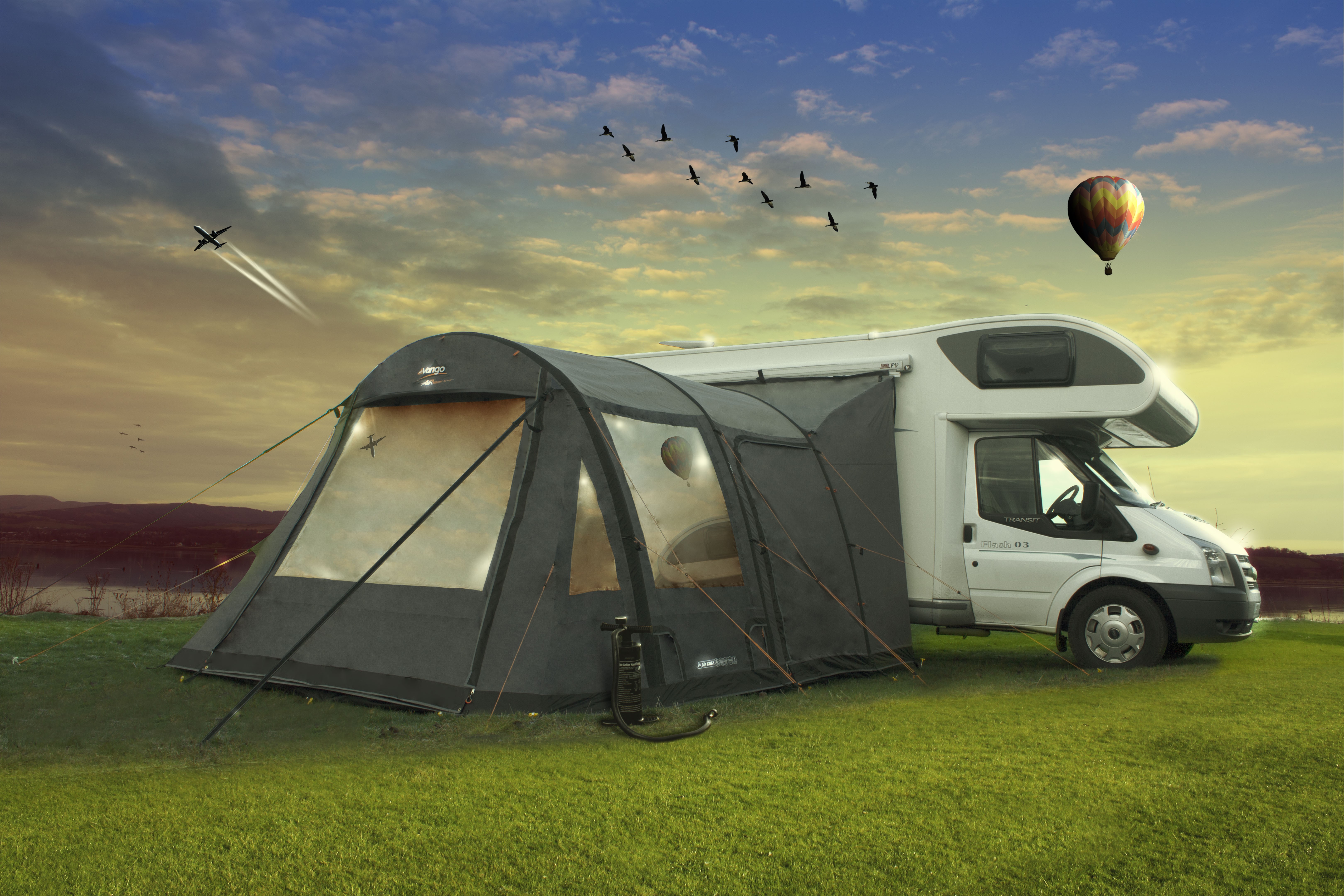Small class A motorhomes, like their bigger counterparts, are built on heavy duty chassis, so many of them sport a “bus-like” look with relatively flat front ends and huge, picture windows. These rigs sit higher than other motorhomes, so they provide commanding views of the road, unparalleled storage space, plenty of head room, and a whole lot of wind resistance.
While class A motorhomes aren’t typically thought of as “small,” there are a number of manufacturers that offer sub-30-foot rigs. These small class A motorhomes aren’t as maneuverable as little class B motorhomes, but they’re still nimble enough to get into and out of most campgrounds, and a ~30′ class A rig is typically short enough to fit into a double parking spot.

Due to lower dry weights, all else being equal, small class A motorhomes can often tow more than their bigger counterparts.
Vital Statistics
- Lengths 20’+
- Heights ~12′ – 13″
- Widths ~88 – 9″
- Interior heights ~7’+
- Price range (new) ~$50,000 – $300,000+
- Fuel economy ~6.5-8 mpg (gas) 12 mpg (diesel)
- Sleeps 4-6
The Little Big Guys
While big class As are the prototypical kings of the road, small class A motorhomes provide many of the same benefits without the associated drawbacks. One of the most striking things about driving a class A rig is how great the visibility is, and small class A motorhomes offer the same picturesque view of the road as their bigger brothers. Since you sit up higher than anything but other class A rigs and semi-trucks, you have an excellent view of the road. Big, wrap-around windows typically provide unobstructed (or slightly obstructed 180 degree views, and big side mirrors offer good visibility behind you as well. While this type of imposing position is usually associated with the biggest class A rigs, even the shortest small class A motorhomes offer the same sight lines.
Class A motorhomes typically have less sleeping space than similarly sized class C motorhomes, due to the lack of a cabover bunk, but there are a few models that offer a pull-down bunk up front. Class A motorhomes are also significantly taller than class C rigs, which has both good and bad points. Taller rigs can cause issues with low-hanging branches and power lines, but that extra height translates into more head space inside and additional storage. Basement model class A motorhomes are especially well known for boasting tremendous amounts of storage space. Even small class A motorhomes tend to have more basement storage space and interior headroom than class C rigs.
Small but Powerful
One huge benefit of buying a small class A instead of a similarly sized class C is that these rigs use heavier duty chassis, and often have more powerful engines and more capable transmissions. If you want plenty of power when pulling a grade, or want to be able to haul a tow vehicle without any problems, a small class A motorhome will typically fit the bill better than a similarly sized class C.
Luxury on the Road
High-end class C motorhomes often come with many of the same touches you can find in class A rigs, but class A motorhomes offer a superior level of comfort and livability. Unless you step up to a small diesel pusher, or a high end class C “toter home,” gas-powered class A rigs really are the top of the line.
Manufacturers of Small Class A Motorhomes
Some of the most popular manufacturers of small class A motorhomes are:
- Coachmen
- Fleetwood
- Holiday Rambler
- Jayco
- Rexhall
- Thor
- Tiffin
- Winnebago





